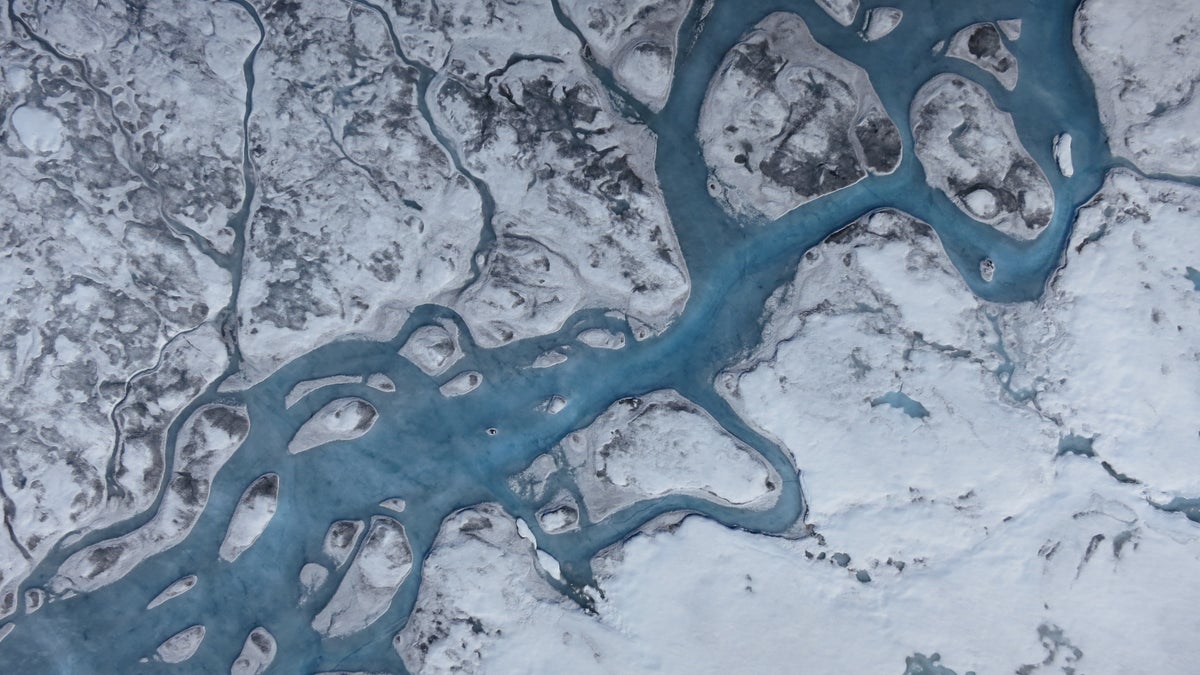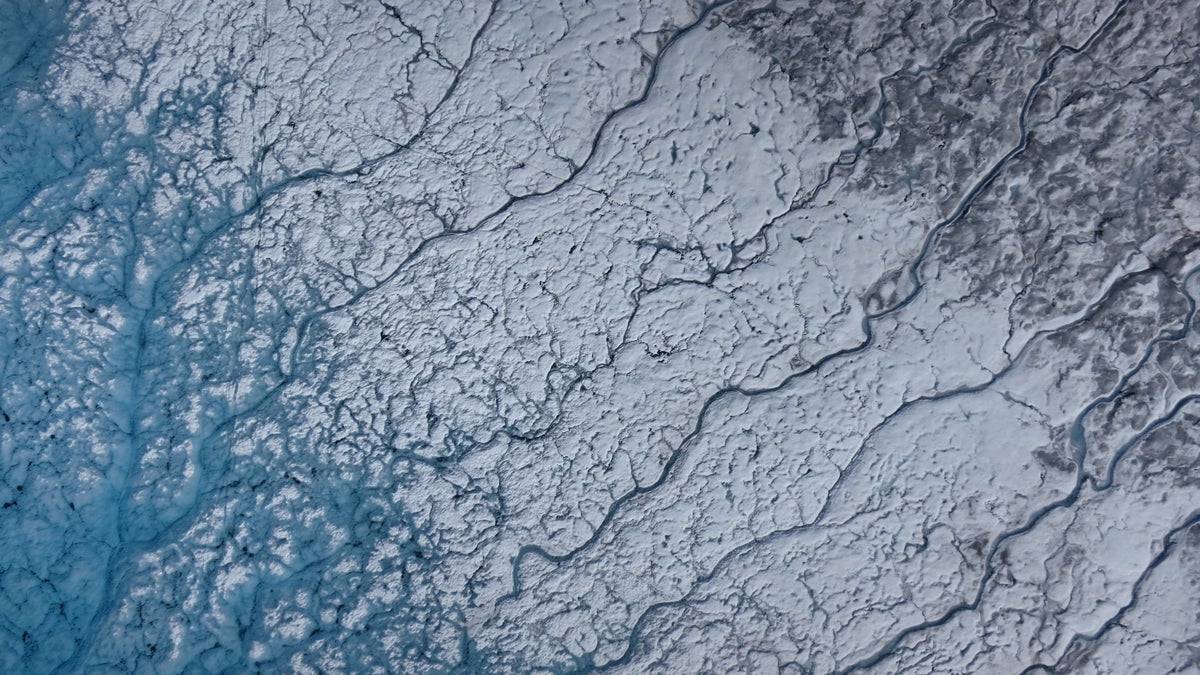
Aerial images of Greenland show rivers of meltwater and areas of dark ice. Greenland’s surface is absorbing more solar radiation as melting increases grain size and brings old impurities to the surface. (Marco Tedesco/Lamont-Doherty Earth Observatory)
Greenland can’t seem to catch a break.
Not only are its ice sheets melting due to skyrocketing temperatures but now researchers using satellite data have found that it has gotten darker over the past two decades. That means it’s absorbing more of the heat, which in turn, is further increasing snow melt.
That trend is likely to continue, with the surface’s reflectivity, or albedo, decreasing by as much as 10 percent by the end of the century, according to a study on the data in the European Geophysical Union journal The Cryosphere.
Related: Glacier twice as big as Manhattan snaps off Greenland ice sheet
Researchers said soot from wildfires in China, Siberia and North America contributed to the darker surface but it was mostly the feedback loops created by the melting that was driving the changes in Greenland.
The feedback loops are especially prevalent during the summer, when clear skies and lots of sunshine result in surface melting. As the top layers of fresh snow disappear, dust from erosion or soot that blew in years before, begin to appear, darkening the surface.

Aerial images of Greenland show rivers of meltwater and areas of dark ice. . (Marco Tedesco/Lamont-Doherty Earth Observatory)
At the same time, as the snow melts and refreezes, the grains of snow get larger. The larger grains create a less reflective surface that allows more solar radiation to be absorbed.
“You don’t necessarily have to have a dirtier snowpack to make it dark,” said lead author Marco Tedesco, a research professor at Columbia University’s Lamont-Doherty Earth Observatory and adjunct scientist at NASA Goddard Institute of Space Studies.
“A snowpack that might look clean to our eyes can be more effective in absorbing solar radiation than a dirty one,” he said in a statement. “Overall, what matters, it is the total amount of solar energy that the surface absorbs. This is the real driver of melting.”
The results have global implications, since the melting ice sheets of Greenland contributed to rising sea levels that may put many of the world's coastal cities at risk and have the potential to cause other disruptions in ocean circulation – specifically disruptions in the Atlantic Meridional Overturning Circulation.
Related: Greenland's snow hides 100 billion tons of water
“It’s a complex system of interaction between the atmosphere and the ice sheet surface. Rising temperatures are promoting more melting, and that melting is reducing albedo, which in turn is increasing melting," Tedesco said. “How this accumulates over decades is going to be important, because it can accelerate the amount of water Greenland loses. Even if we don’t have a lot of melting because of atmospheric conditions one year, the surface is more sensitive to any kind of input the sun can give it, because of the previous cycle.”
The study used satellite data to compare summertime changes in Greenland’s albedo from 1981 to 2012. The first decade showed little change, but starting around 1996, the data show that due to darkening, the ice began absorbing about 2 percent more solar radiation per decade. At the same time, summer near-surface temperatures in Greenland increased at a rate of about 1.33 degrees per decade, allowing more snow to melt and fuel the feedback loops.
Related: Icy Greenland melting at accelerating rate, study finds
So how can we put the brakes on this darkening?
The feedback loops could be halted with the addition of more snow and less melting. But Tedesco said that doesn’t seem likely given the increasing concentration of greenhouse gases in the atmosphere. Worse, the increased warming is expected to bring more precipitation to the region – which would further enhance the melting of the ice sheets.
“As warming continues, the feedback from declining albedo will add up,” Tedesco said. “It’s a train running downhill, and the hill is getting steeper.”




















